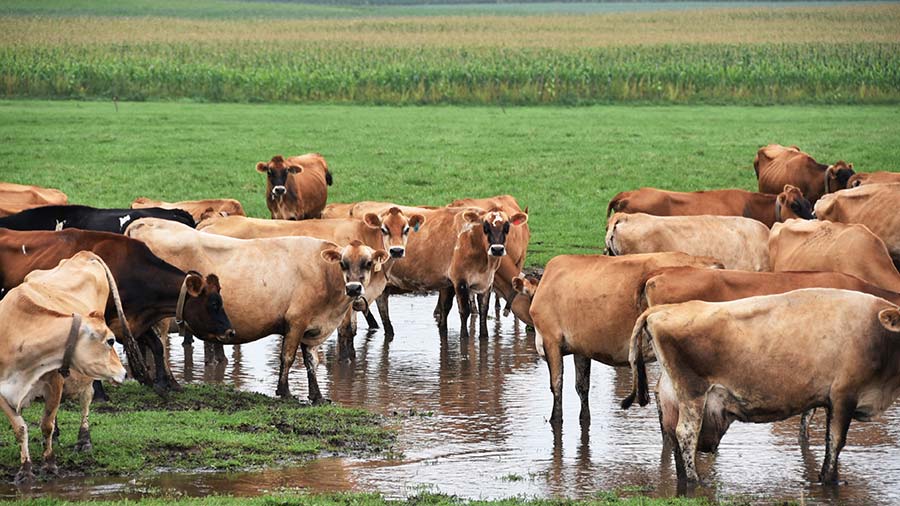7 ways to prepare grazing herds for big rain events
 © StevertS/Adobe Stock
© StevertS/Adobe Stock Although changing weather patterns seem to bring rainfall in sudden, torrential downpours and flooding has become normal for many farms, planning can reduce the impact of big weather events.
Farmers Weekly asked LIC consultant Sean Chubb for some tips on how dairy farmers can prepare.
See more: Advice to help you protect your farm during flooding
1. Plan and monitor
There is no foolproof way of getting accurate weather data. However, a weather station will give you information about rainfall, soil temperature and moisture for your farm to make more timely decisions.
For instance, once your soil moisture starts creeping up, you can get the team ready to implement your mitigation strategies.
Think about the rotation leading up to these times of year. Avoid grazing flooded paddocks first in spring.
Break up the farm into wet and dry paddocks, then graze dry paddocks before the end of October to allow them to recover for February turnout.
2. Grazing
Graze “as wet as you dare”, but grazing higher covers in wet conditions causes less damage as pasture can handle the water load. And don’t push for low residuals.
Set break fences up to graze squares, not rectangles. This disperses cows out and minimises poaching.
In a long rectangle, cows keep overtaking each other up to the fence and back because the grazing instinct of the herd animal is movement.
Start on/off grazing when paddocks are at field capacity, to avoid damage caused by excess water in the soil.
Suddenly switching to on/off grazing will see production drop for a couple of days.
To avoid this, transition cows to it over three days (where they graze non-stop for eight hours, then are pulled off to ruminate).
If offering buffer feed, turn cows out with an edge to appetite and pull them inside to eat buffer.
3. Using infrastructure
Tracks and paddocks are set up to access grass during wet weather. But if you are susceptible to big weather events, plan to use infrastructure flexibly.
Having more water troughs, for instance, allows you break down paddocks further and move cows more frequently.
Drop the whole fence line between the paddock and the track to minimise damage in gateways. Cows can then choose where they enter and exit.
4. Risk management
Have money in the bank and silage in the clamp to cover events when cows have to be housed earlier or turned out later.
The cheapest and most flexible way is to have some feed in reserve, plus cash on hand.
If you put all your money into feed, it is locked in and cannot be spent elsewhere if extra feed is not needed.
5. Outwintered stock
To minimise damaged areas, if you have a week of torrential rain forecast, keep the damage to one paddock by feeding in ring feeders.
Where the soil has lost its canopy protection, because crops have been grazed, not only will this cause more treading damage and compaction, if these fields are on a slope, you can also get soil run-off.
Use back fencing to stop cows moving on to pre-grazed land.
6. Staff
The person fetching the cows is not usually the manager making decisions about feeding and paddock selection. It is important, therefore, to have good communication between the two.
Paddock damage reports need to be shared, and management plans communicated.
Make sure everyone is trained and understands what to do.
Staff will be out in the bad weather most, so recognise their hard work: say thank you or give them a couple of extra beers on a Friday.
Make sure they have good wet-weather gear and dry boots.
7. Manage mental health
Talk to other people – they will all be going through the same experience, so you won’t feel alone.
Remember that grass is a resilient plant, and it will recover. You can minimise damage.
Also, remember the events of the season as a whole – don’t get lost in the here and now – this will be just a short blip.
